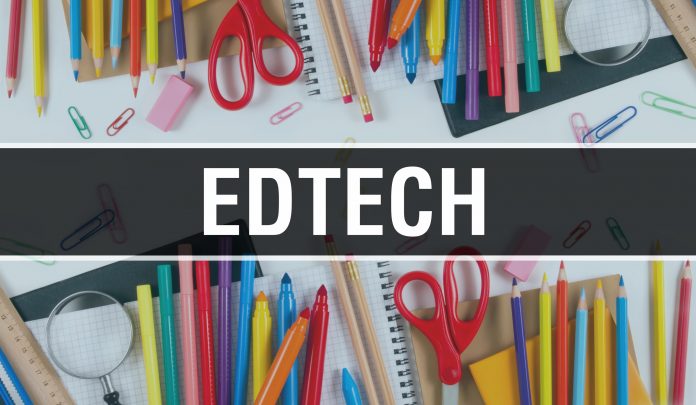Graham Glass, CEO of Cypher Learning, discusses how schools can use this time as an opportunity to implement an effective edtech strategy for when they reopen
In the context of the pandemic, many schools and universities turned to virtual learning environments as the only way of ensuring some continuity of education during these times of crisis. Even though enough educators and students — and the entire educational community — were at least familiar with online learning practices and educational technologies, the shift was sudden nevertheless.
Designing and implementing a successful online learning program takes time. Depending on the number (and age) of students, access to training and technologies, as well as on various other resources, it can take between a few weeks and up to a year. Most educators only had a few days to figure things out.
Thankfully, educators are resourceful and students resilient. Solutions were improvised while dealing with rapid changes, and homework continued to be done, remotely. To what extent, or how well, is less important. The summer vacation is upon us, giving everyone the luxury that wasn’t available when schools had to close their gates: time.
There are many questions that need to be answered before schools reopen, and the Government’s guidance remains vague, sometimes contradictory, and always changing. From physical measures and stricter hygiene rules in the same spaces, to how the curricula will continue, and to the mental health aspects of students and teachers/professors, educational institutions have thorny issues to untangle.
But one aspect remains clear: online education is here to stay. Even if in-class courses will resume, students and teachers can rely on virtual learning environments to support all learning activities. The pandemic has made it clear for many that online education can be more than just an Emergency Plan B, but instead an integrated part of education as a whole.
The negative aspects and consequences of the invisible health threat that took over our world are unquestionable and undeniable. But we now have a once-in-a-generation opportunity to make things better: to design a better education system. A system that is more comprehensive and more inclusive, that can be accessed anytime, anywhere, without compromising on quality and most importantly, one that is future-proof.
Education technology — or edtech — is nothing new. It wasn’t created to compete against traditional education, even though some educators felt that way. It was meant to support it.
Edtech can massively reduce a school’s administrative strain through various systems and automated processes. For example, it can easily take care of all school schedules, alert school managers of any issues, giving them time to react before any escalation occurs, as well as providing valuable data, which is critical for a better decision-making process.
Also, edtech can be used in many ways to spark students’ curiosity, provide support during their learning process, assess their mastery of concepts, all while keeping them engaged every step of the way.
The only thing to keep in mind is that the mere presence of edtech in a school setting doesn’t guarantee anything. Instead, how it is used is the real indicator of successful results and outcomes. That’s why it’s paramount to identify and choose the right edtech that will meet the school’s needs, and why teachers need to use it effectively in their classrooms so that students can actually benefit from it from an academic standpoint.
How an LMS can help
A learning management system — or LMS — is one of the most comprehensive edtech solutions that educational institutions can rely on when creating a future-proof strategy of education. Here’s how it can help:
Centralise all learning resources
Educators can use the school LMS as a central repository of all learning materials. Each teacher can upload any type of digital file (text, audio, video, graphic, weblink, etc) for each lesson they create. They can make these resources available to their students on a need-to-know basis and also reuse (and update if necessary) the same materials every year. As an added bonus, they can share these resources with other teachers teaching the same subject, within the school or within the group of schools using the same LMS.
Increase student engagement
Students have different learning needs and therefore learn in multiple ways, but they do learn better when they have an interest in a certain topic and they also thrive when engaged in a little competition. Teachers can spark an interest in a topic by including a variety of learning materials in their online lessons and making learning more interactive with the various collaboration tools of an LMS. They can also include gamified elements — such as points, badges, leaderboards, or trophies — throughout each lesson or the entire course, encouraging students to compete against each other or just against themselves.
Provide personalised recommendations
Student progress is unique to each individual and educators are supposed to support them at every step. But with so many students and so little time, topped with plenty of standard requirements that have to be met, teachers are in for a challenge. An LMS can ease their workload through the many automated rules that can be set up. For example, a teacher can be notified when a student struggles with a particular concept in a lesson and can intervene with extra resources and additional guidance to better support that student. What’s more, some systems come with a number of adaptive learning features and are able to provide personalised recommendations for students automatically.
Provide more accurate evaluations
Assessing students’ knowledge is one of the most time-consuming tasks a teacher has to do. Students benefit a great deal from getting a clear picture of their learning progress through the grades they receive. Teachers can create many types of assessments for students within an LMS, depending on the type of learning activity and other factors. They can even differentiate assessment for each student. All of this, coupled with the clearer picture of a student’s progress, makes the process of evaluations far more accurate.
Centralise all student data
An LMS gathers together all types of student data that is generated every time a student uses the system and it can even incorporate more data from third-party tools. Generating reports is the next step in assessing and using all of this data. Having all student data in one place offers a bird’s-eye view of the student performance within the school. Both teachers and school managers can make more informed decisions, from the most granular, affecting the individual student, to the most extensive, affecting the entire school.
Extend learning beyond the classroom
With an internet connection and a computer (or even a mobile device) teachers and students can log in to the school LMS and engage in teaching and learning activities, almost just as they would in the regular classroom. Whether this is an independent decision or due to the government imposing it (due to natural disasters or a global pandemic, for instance), having access to an LMS as a distance learning platform ensures learning is not confined within the four walls of the classroom and can continue online without any disruption to the student experience.
Closing thoughts
Schools can take advantage of the current situation to implement an effective edtech strategy and centralise all their learning resources and student progress data. This enables schools to save time and crucially provide more accurate and informed evaluations, freeing up teachers to dedicate more attention to the individual student’s needs.











